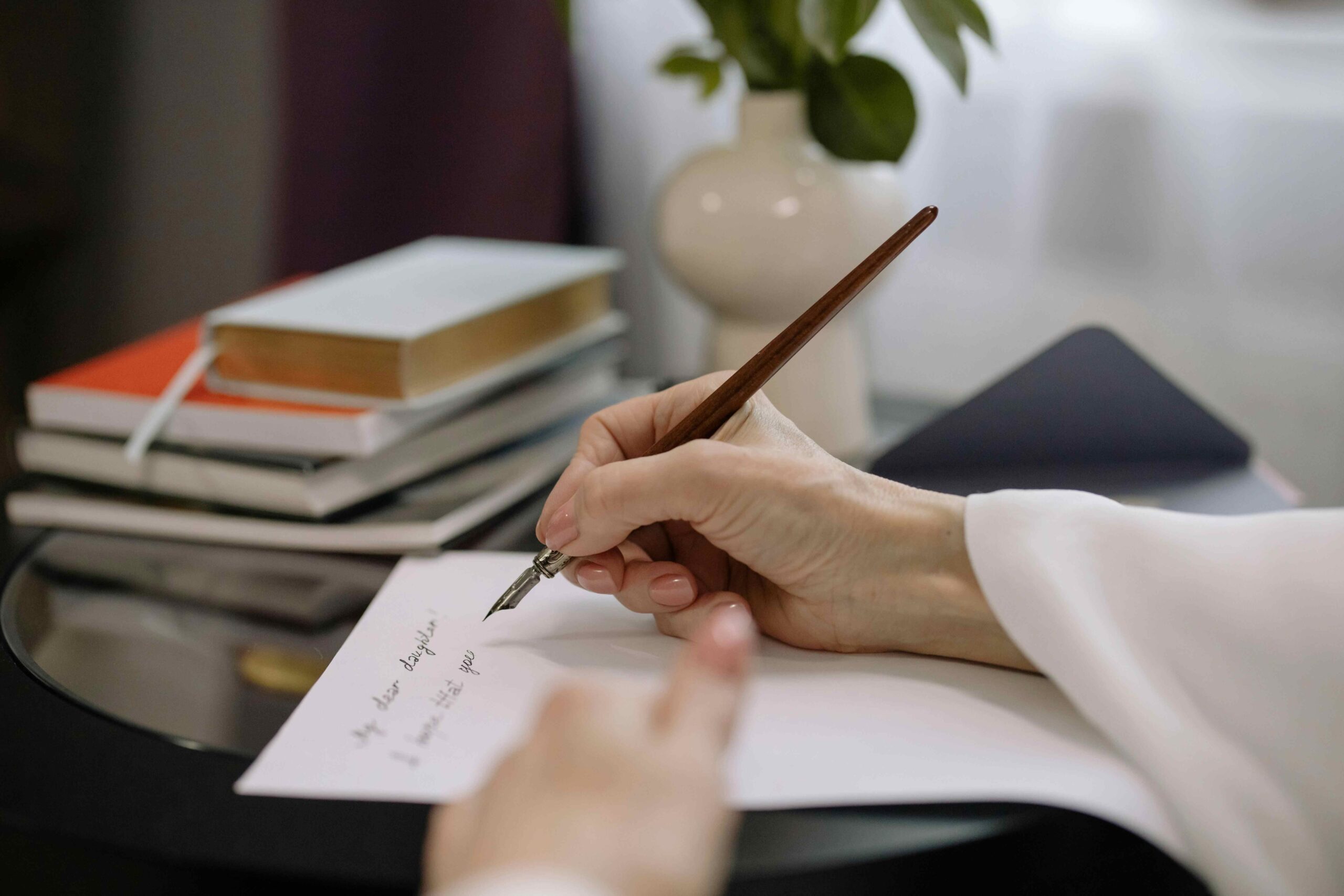
Rediscovering Lost Arts: The Revival of Handwritten Letters
Article Level: C1-C2
Explanation: This article explores the modern revival of handwritten letters in a digital age. It highlights their emotional value, role in education and therapy, and growing popularity as a form of mindful, meaningful communication. A beautiful tradition is making a thoughtful comeback.
Commonly Used Words from the Article
-
Revival /rɪˈvaɪvəl/ (noun): A renewed interest or activity in something that was previously in decline.
There has been a revival of interest in traditional crafts. -
Tactile /ˈtæk.taɪl/ (adjective): Related to the sense of touch.
The tactile nature of handwritten letters adds to their charm. -
Nostalgic /nɒˈstældʒɪk/ (adjective): Longing for the past, often in a sentimental way.
Writing letters brought back nostalgic memories of childhood.
-
Superficiality /ˌsuː.pə.fɪʃ.iˈæl.ə.ti/ (noun): Lack of depth or seriousness.
Many people are tired of the superficiality of online messages. -
Curated /ˈkjʊə.reɪ.tɪd/ (adjective): Carefully selected and organised.
She subscribed to a curated letter-writing kit service.
Audio File of the Article
Read more: Rediscovering Lost Arts: The Revival of Handwritten Letters

Rediscovering Lost Arts: The Revival of Handwritten Letters
In a world increasingly dominated by instant messaging and digital communication, a quiet revolution is taking place — the revival of handwritten letters. Once considered a fading art, the practice of putting pen to paper is making a poignant return. As more people seek authenticity, mindfulness, and deeper personal connections, handwritten letters are emerging as a meaningful antidote to the speed and superficiality of modern life.
There’s something uniquely intimate about receiving a handwritten letter. Unlike a text or email, it takes time, effort, and intention to craft. Each word is carefully chosen, each sentence considered. The writer’s personality flows through the ink, their emotions embedded in the strokes of the pen. This tactile, human element cannot be replicated by a blinking cursor or an emoji.
The pandemic years, with their lockdowns and digital fatigue, prompted many to slow down and re-evaluate their means of communication. Some turned to journaling, others took up calligraphy, and many rediscovered the joy of letter writing. What began as a nostalgic experiment for some soon became a habit — a ritual of reflection and connection.
Beyond personal relationships, handwritten letters are also finding their way back into education, therapy, and even business. Teachers encourage students to write letters to historical figures or pen notes of gratitude. Therapists use letter writing as a tool for healing and self-expression. Some companies are even reintroducing handwritten thank-you notes to clients in an effort to stand out in a crowded market.
Social media, ironically, has played a role in promoting this analogue comeback. Online communities and hashtags such as #SnailMailRevival and #WriteMoreLetters have brought together enthusiasts from across the globe. Subscription services offering pen-pal pairings and curated stationery kits are thriving.
There’s also a growing appreciation for the aesthetic side of letter writing. Beautiful handwriting, quality paper, and personalised envelopes transform an ordinary message into a small work of art. It’s not merely about the words — it’s the entire experience, from sealing the envelope to hearing the letter drop through the recipient’s door.
While technology certainly has its place, the handwritten letter reminds us of something precious: the power of slow communication. In an age obsessed with speed and brevity, writing a letter is an act of resistance — a way to pause, reflect, and truly connect.
So perhaps it’s time to dust off your stationery box, find your favourite pen, and write to someone — not because you must, but because it matters.

Grammar Notes
The article makes frequent use of complex sentences, passive voice, and modal verbs for speculation and recommendation.
Grammar Focus: Complex Sentences and Relative Clauses
Definition: A complex sentence has one main clause and one or more subordinate clauses.
Example from the article: “What began as a nostalgic experiment for some soon became a habit.”
Here, the subordinate clause “What began as a nostalgic experiment” adds detail to the subject of the main clause.
Lesson Tip: Use complex sentences and relative clauses to add depth and sophistication to your writing.
Join Our FREE English Grammar Course and improve your grammar skills!

Five Questions Based on the Article
-
What aspects of handwritten letters make them more personal than digital communication?
-
How did the pandemic contribute to the resurgence of letter writing?
-
In what non-personal areas are handwritten letters gaining popularity again?
-
How has social media influenced the revival of letter writing?
- Why is writing a letter considered an “act of resistance” in today’s society?
Join Our FREE Weekly English-speaking Class and improve your speaking skills!

We’d love to hear your thoughts! Join the conversation by leaving a comment below. Sharing your insights, questions, or experiences can help you connect with others in our English learning community. It’s a great way to practice your English skills, engage with like-minded individuals, and improve together. Don’t be shy—jump in and let’s keep the discussion going!

 EnglishMasteryHub
EnglishMasteryHub